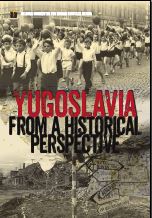PART II: YUGOSLAV EXPERIENCE FROM NATIONAL PERSPECTIVES - Macedonia and Macedonians in Yugoslavia: in Search for Identity
PART II: YUGOSLAV EXPERIENCE FROM NATIONAL PERSPECTIVES - Macedonia and Macedonians in Yugoslavia: in Search for Identity
Author(s): Aleksandar Litovski
Subject(s): Recent History (1900 till today), Inter-Ethnic Relations, Ethnic Minorities Studies
Published by: Helsinški odbor za ljudska prava u Srbiji
Summary/Abstract: Macedonia was the most southerly region, i.e. republic (South Serbia, Vardar Banovina, Vardar Macedonia, the Democratic Federal Republic of Macedonia, the People’s Republic of Macedonia, the Socialist Republic of Macedonia) of the once kingdom or republic prefixed Yugoslavia. Yugoslavia linked a part of the Macedonian people and other Yugoslav peoples into a common state. In the period 1918–91, Macedonia’s territory of , 25,713 square kilometers was an integral part of Yugoslavia and its population ranged from 808,724, to 2,002.547 people (according to the censuses of 1921 and 2002 respectively). Characteristic of this region or republic throughout the Yugoslav era was its multi-ethnicity.
According to statistics in the period of the Kingdom of SCS/Yugoslavia, the Macedonian ethnic community predominated in the corps of the Serbian ethnic community in Macedonia. Of all other ethnic communities, Turkish, Serbian, Bosniak, Aromanian, Roma, etc. the Albanian was the biggest.
Book: Yugoslavia from a Historical Perspective
- Page Range: 163-185
- Page Count: 23
- Publication Year: 2017
- Language: English
- Content File-PDF

